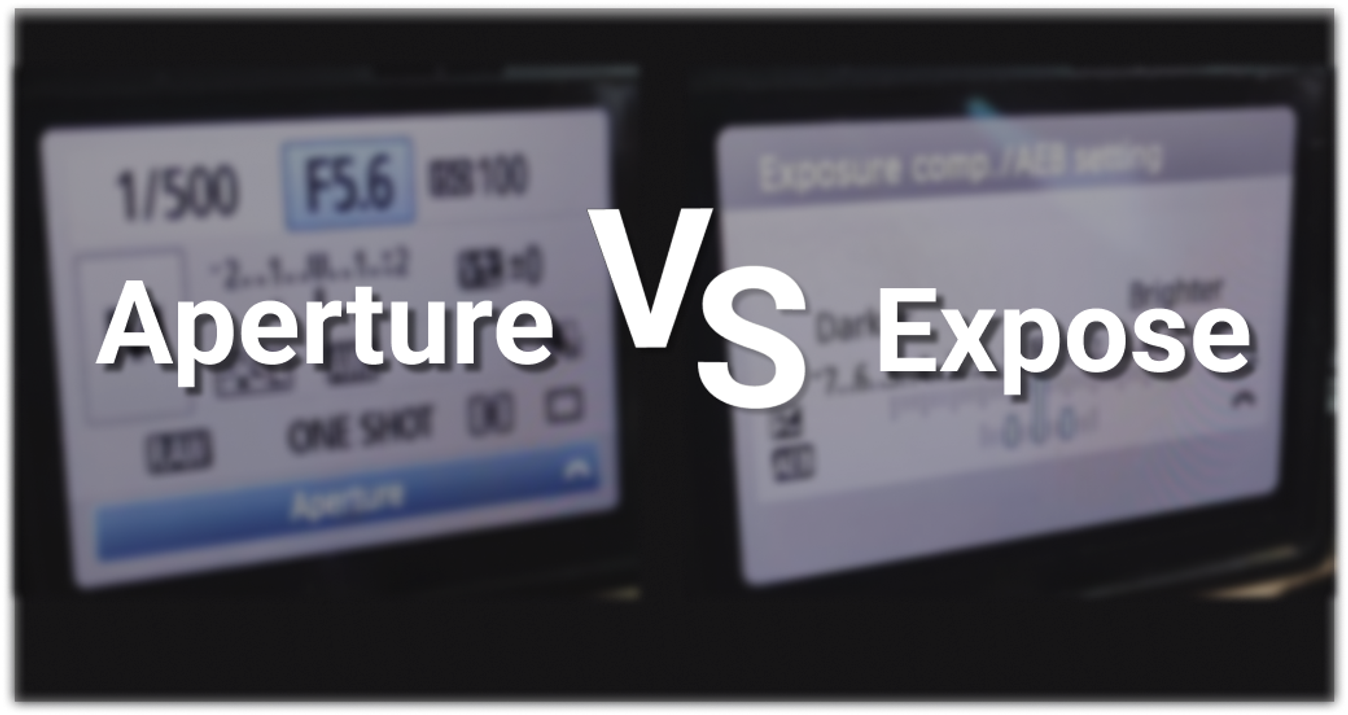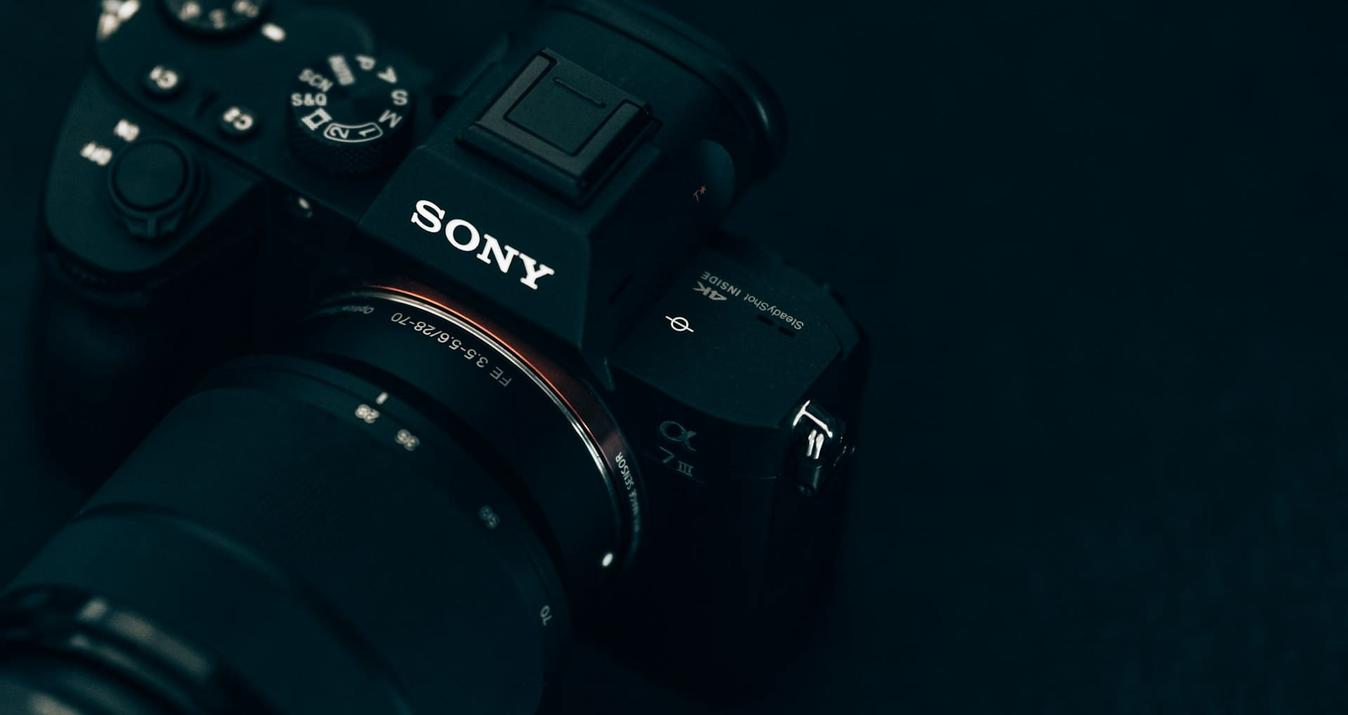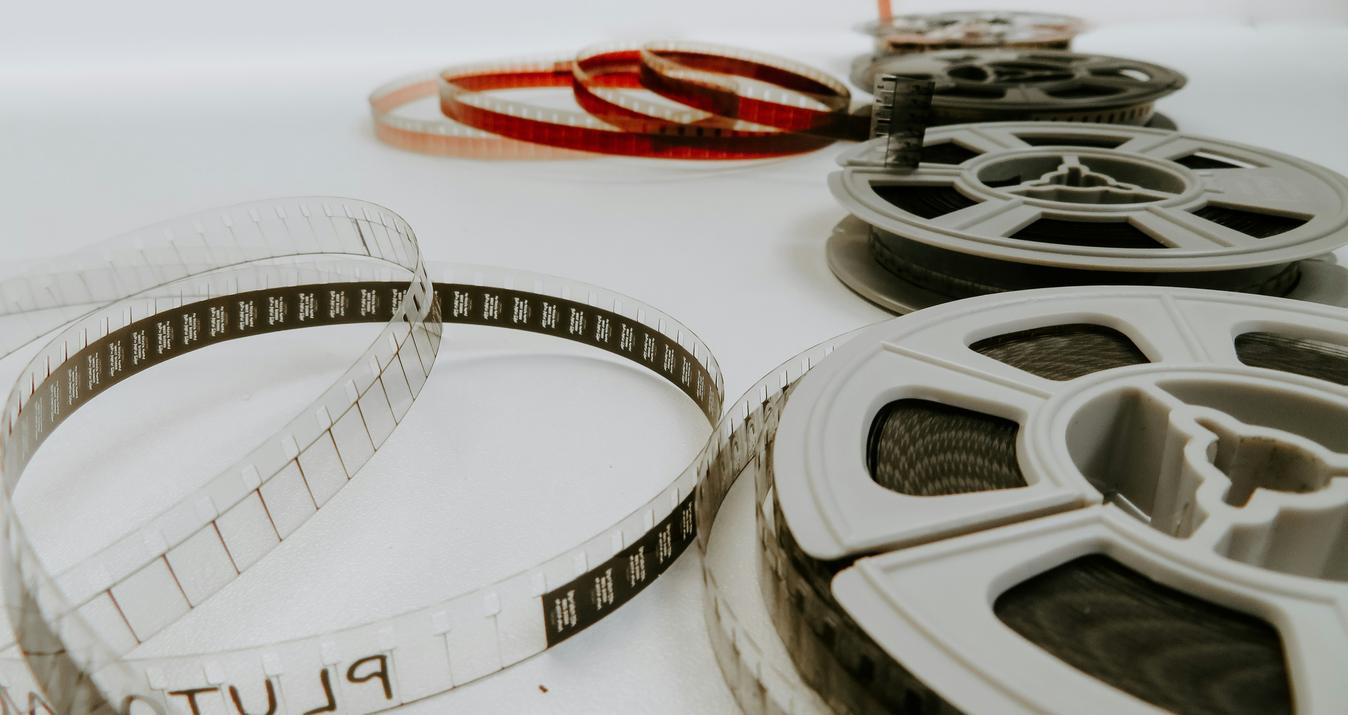Understanding F-Stops: What is an F-Stop and How to Use It
December 20, 2022

Are you a newbie who bought your first camera yesterday? Or are you already familiar with many nuances? Regardless, you should know about f-stops in photography.
An f-stop on camera is the size of the aperture opening in a lens, which determines how much light enters the camera. The aperture is a key part of the exposure triangle in photography, alongside shutter speed and ISO, which measures the camera's sensitivity to light.
Simply put, f-stop is the ratio between the focal length of the lens and the diameter of the entrance pupil. As for the front glass element, it is usually several times smaller than its diameter. It is important to note that the diameter of the entrance pupil will decrease when the aperture is closed. This explains the fact that the light beam passing through it will be narrower.
However, the light transmission ratio is much bigger than the f-stop number. There are many factors: glass quality, number of lenses, etc. Accordingly, this will change the parameter of the light hitting the sensor.
Once we've figured out the f-stop meaning, there's one more thing you should remember. This parameter will never be completely stable. On the contrary. It will constantly change depending on the absorbed light.
Definitions of T-Stop and F-Stop
 T-stop is an f-stop corrected for the actual light transmittance. That is, the f-stop is the theoretical value and the t-stop is the actual value tested. You can calculate it by dividing the f-stop in the photography definition of the lens by the square root of the light transmittance ratio.
T-stop is an f-stop corrected for the actual light transmittance. That is, the f-stop is the theoretical value and the t-stop is the actual value tested. You can calculate it by dividing the f-stop in the photography definition of the lens by the square root of the light transmittance ratio.
So, let's assume that we have a lens with a maximum aperture value of 2.8, capable of transmitting 90% of the light. Let's divide 2.8 by the root of 0.9. The resulting value is 2.953, which we can round up to T/3.0. Now that you know what is f in camera let's talk about other things not previously mentioned.
Thus, t-stop is a parameter that shows how much light the lens lets in. Let's understand a little bit about what is f in photography.
- A high f-stop result in a narrower aperture and a small volume of light passes through the light sensor.
- Accordingly, if the f-number decreases, there is an increase in the aperture, and with it, more light passes through it. Study the camera f-stop chart relevant to your model.
- The amount of light can depend on the intensity and color values. The low light, the darker and less intense the colors in the frame. When you increase the control of the amount of light, you can intensify the color.
- Lighting affects the mood of a scene, especially in interiors. The type of lighting and aperture can identify the brightness, contrast, and glare in a property photo. Combined, these elements into visual effects can elicit an emotional response from potential buyers, allowing you to interact more with them.
Let me tell you about a common mistake that beginner portrait photographers often make. According to them, the f-stop will be greater with a slightly open aperture, and vice versa. That's why the opening is the value of the lens' working diameter to its focal length in numerous values. In photography, the Latin letter f is often used instead of one to specify the function of the fraction; for example, a relative aperture of 1/5.6 is denoted by f/5.6. From this, you can see that the same value will indicate a different diameter for different cameras. For example, an f/11 aperture on a 100mm lens (100/11) would be 9.09mm. For a 50mm lens, the same value would already (50/11) be 4.54mm. After reading the above, it is completely clear that the size also determines how much light it is able to let in.
Now we will move to the next section.
What is F-Stop in Photography and How It Affects Your Image?
 The first time the effect of light loss in lenses with different construction was noticed in movies. Cinematographers in general do not like zoom lenses, that is, to put it simply - they do not like zoom lenses. This is a dislike they have because there are not a lot of high-quality zoom lenses and they became available relatively recently. The classic school of camera work is based on lenses with fixed focal lengths, and all the zooming in and out of the frame in focus is usually done with a dolly on rails. When working with complex scenes, the operator has to periodically change lenses on the camera, selecting the desired focal lengths. And then it turns out that lenses different in design at the same aperture number give different brightness of the picture!
The first time the effect of light loss in lenses with different construction was noticed in movies. Cinematographers in general do not like zoom lenses, that is, to put it simply - they do not like zoom lenses. This is a dislike they have because there are not a lot of high-quality zoom lenses and they became available relatively recently. The classic school of camera work is based on lenses with fixed focal lengths, and all the zooming in and out of the frame in focus is usually done with a dolly on rails. When working with complex scenes, the operator has to periodically change lenses on the camera, selecting the desired focal lengths. And then it turns out that lenses different in design at the same aperture number give different brightness of the picture!
Advanced yet easy-to-use photo editor
Get Luminar Neo NowThere are many reasons why you don't see the value of f-stop photos in your everyday photography. One reason is that accurate measurement is quite expensive. So companies don't even test their cheaper lenses for light transmission ratio.
The demand for high-performance camera lenses is growing. The global lens market even expects shipments to reach 250 million units by 2027. The size of the opening is one of the characteristics that consumers look for because it greatly affects exposure settings, especially concerning shutter speed.
- When photographing interiors and exteriors, it is advisable to first set up scores of the aperture before the opening speed to get the correct exposure. The same is true when setting ISO and white balance using auto mode or manual mode.
- A small f-number that creates a wide f-stop and aperture means that the shutter opens wide, allowing more light to enter the lens. You may be surprised, but fast shutter speeds work best in this case.
Photo lenses are always calibrated in aperture numbers. The minimum aperture and f-stop number that can be set on a given f-stop on the lens is called its value. And the t-stop value corresponding to it will characterize the transparency of the lens glass. The more the t-stop differs from the aperture number, the less transparent the lens is.
What is an F-Stop on a Camera and How It Influences Depth of Field?
 Another is that in photography, f-stop parameters are more practical. Today, every digital camera has built-in metering and high ISO performance. So you're unlikely to notice a difference between T3.2 and T2.9 lenses (if both are F/2.8) because your camera fixes it.
Another is that in photography, f-stop parameters are more practical. Today, every digital camera has built-in metering and high ISO performance. So you're unlikely to notice a difference between T3.2 and T2.9 lenses (if both are F/2.8) because your camera fixes it.
Changing the aperture affects the distance to or after the focus point. Commonly referred to as depth of field, this is the area in the photo with acceptable focus or sharpness around the subject.
- A higher f-stop means results in a greater distance in front of or behind the focus point that appears to be in focus.
- A lower aperture reduces the distance to the point in focus.
- If you are photographing a chair in the middle of a room with an aperture of f/22, a smaller value will create a better depth of field and a larger area of focus.
- A larger or smaller aperture can blur both the background and the foreground. Meanwhile, a little one or a higher f-stop may create only a slight blurring of the background.
- If you change the setting to f/2.8, the hole becomes larger. In the finish, you can create a shallower depth of field and a smaller focus area.
- If you want a shallow focus effect on your subject's face, you can use f numbers such as f / 1.4 or f / 2.
- You can change from f/8 to f/16 to ensure clear focus across the horizon when photographing landscapes.
At a certain distance objects in photos with both higher and lowest f-stop will look equally sharp. It is in this area that the images merge.
How to Use f-stops in Photography: Best Tips
 Gate speed determines the amount of time the camera aperture is open when a picture is taken. The longer this happens, the more light hits the sensor and the bigger the resulting exposure becomes. Increasing or decreasing the aperture speed results in a 1 f-stop increase camera f setting or a reduction in exposure. For example, if we change the speed from 1/100th to 1/200th of a second, it would mean that twice as much light would get through - in such cases, we say that the exposure is reduced by 1 stop. Similarly, if we change the opening speed from 1/60th to 1/30th of a second, thereby increasing the amount of light, we have a one-stop increase in exposure.
Gate speed determines the amount of time the camera aperture is open when a picture is taken. The longer this happens, the more light hits the sensor and the bigger the resulting exposure becomes. Increasing or decreasing the aperture speed results in a 1 f-stop increase camera f setting or a reduction in exposure. For example, if we change the speed from 1/100th to 1/200th of a second, it would mean that twice as much light would get through - in such cases, we say that the exposure is reduced by 1 stop. Similarly, if we change the opening speed from 1/60th to 1/30th of a second, thereby increasing the amount of light, we have a one-stop increase in exposure.
- The ISO sensitivity shows how sensitive the matrix is to light. All other things being equal, a shorter opening speed or size of your aperture value can be used for a more sensitive sensor and result in the same exposure as for a less sensitive sensor with a lot of light.
- Increasing or decreasing the aperture scale by a whole stop. In this case, the factor is 1.41 (the square root of two). For example, changing the number from f/2.8 to f/4 is equivalent to reducing exposure by 1 f-stop, because 4 = 2.8 * 1.41. Changing the aperture number from f/16 to f/11 increases exposure by 1 stop, because 11 = 16/1.41. Just as with opening speed, most cameras have an aperture stop of 1/3.
Stops give us the ability to directly compare the influence of opening speed, diaphragm, and ISO. This means that you can easily change these three parameters while leaving the exposure unchanged.
Here's an example. Let's say you take a picture with a shutter speed of 1/60s, an aperture of f/8, and an ISO of 200. But you find that the subject is blurry at that shutter speed, so you decide to reduce the shutter speed to 1/120s.
With this 1-stop shutter speed reduction, you will get a darker picture because there is only half as much light reaching the sensor as there was before this change. To compensate for this decrease, you must now raise the exposure by 1 stop at the expense of something else. Now, due to the fact that we know how to change the stops, this will be quite easy to do.
For example, you could open the aperture wider to let in more light - set it to f/5.6 instead of f/8 - thereby raising the exposure by one stop and actually going back to the original option. Or you can increase the ISO to 400, which will also increase the exposure by one stop.
It's easy to see that f-stops numbers are a simple way to set and adjust exposure.
When changing the three exposure settings, always keep in mind that changing each of these settings has different consequences.
- Shutter Speed. If the shutter speed is relatively slow, the photo may get blurry, either from the camera shake during shooting or from the movement of the subject itself.
- Aperture. A wide aperture opening makes a shallow depth of field, and some subjects in the composition may not be in focus. But at the same moment, a shallow depth of field allows you to isolate your subject. Consequently, if you want to achieve this effect, you should not use narrow apertures (with large numbers).
- ISO. The higher the ISO, the more "noise" is present in the photo, and the less clarity is achieved. We've practically disassembled the relationship between depth of field and f-stops.
Like everything in photography, adjusting the three exposure settings requires some balance. You must first decide what effect you want to achieve and then choose the appropriate setting that creates that effect and avoids flaws. Stops in exposure are the tool that will allow you to do this.
Conclusion
 Now you understand how f-stops explained and improve your photography with them. But it's good to know about them to avoid misconceptions. Modern camera technology makes f-stop parameters a viable option for today's filmmakers, but the best film lenses still guarantee real exposure to t-stop parameters. But the best way to learn how to be a landscape photographer is to practice all the time!
Now you understand how f-stops explained and improve your photography with them. But it's good to know about them to avoid misconceptions. Modern camera technology makes f-stop parameters a viable option for today's filmmakers, but the best film lenses still guarantee real exposure to t-stop parameters. But the best way to learn how to be a landscape photographer is to practice all the time!
And if you need to edit a photo, we recommend using Luminar Neo. This application is very handy, and it has a lot of tools. The AI can analyze the picture and help improve it. Editing a photo has never been easier!






